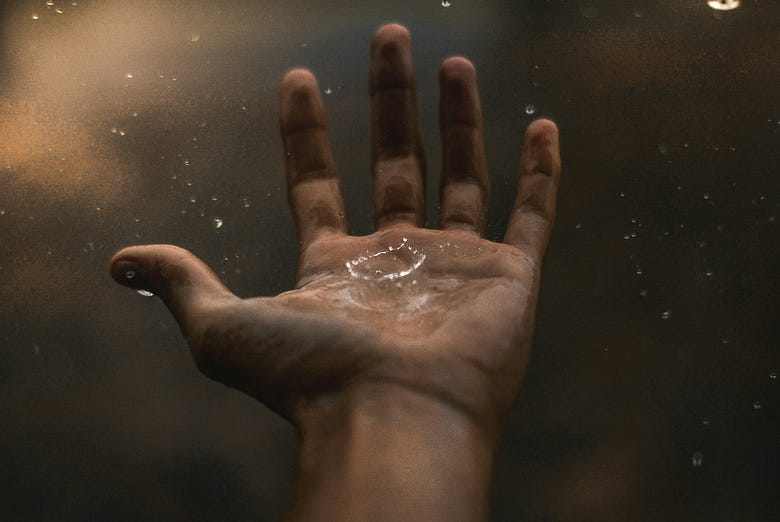
I’d be shocked if you haven’t heard of the term ‘fake news,’ but have you come across ‘fake rain’ before? It’s a surprisingly common occurrence.
Most know about cloud seeding, the process of sprinkling clouds with small amounts of silver-iodide or salt to induce rainfall. But scientists in the UK, Finland, and the UAE are about to find out if we can fight back against Zeus.
As in, can we electrocute clouds to induce rainfall, too?
Using advanced drone technology, they’ll be running several tests in the next few months to find out. And if it works — or at least at a scale that’s more effective than current technologies — it could have drastic implications for geopolitics in the not too far-off future.
Cloud Seeding Has Been Around for A While
Cloud seeding as a concept first came into practice in 1946, invented by chemist Vincent Schaefer and physicist Irving Langmuir.
Their work was furthered by Dr. Bernard Vonnegut, who invented the idea of using silver-iodide to change the physical structure of rain droplets in the sky.
Over the next 70 years, experiments were run in nearly every continent with somewhat mixed results. They tinkered with different methods of distributing the chemicals — like firing canisters from artillery, dropping loads from planes, using balloons, and even fireworks.
It was only in 2017 that scientists in the UK figured they might be able to use drones — a technology that can be charged with green energy — instead of chemicals.
The fancy drones will carry an exposed electrical charge intended to trigger cloud droplets to merge, becoming large enough to fall to earth as rain.
We’ll find out in the next few months how well this new method actually works in the field.
Scientists Want to ‘Fix’ The Rain
You might be surprised at the sheer number of countries that actively try to control the rain. As of 2017, more than 50 governments have programs engaged in experiments and deployment.
And you can see why.
Any country that has drinkable-water shortage problems, deserts, or aridification of their land is under massive pressure to solve this problem.
Countries have so far used the technology for several reasons:
- To increase and replace snowcap levels on mountains
- To ensure their hydroelectric dams have enough water
- To reduce desertification of land
- To protect crops and drinkable water supplies
But there might be another reason to develop this technology in the future.
The engagement of warfare.
We’ve Already Had Water Conflicts
Some think tanks around the world argue wars in the future won’t be fought over oil but over something far more precious. The slippery substance that composes around 60% of our bodies — H2O.
The Pacific Institute, which runs an ongoing list of every water conflict in history, lists 926 separate conflicts in history stretching back to 3000 BC.
Even scarier, 466 of those occurred since 2010, or are still ongoing.
Battles, strifes, and incidents that ended up in mass irrigation systems being destroyed and populations starving from flooding. Wells spiked with poison or buried to starve a village. Rivers diverted to deprive entire populations of drinkable liquid. Protestors being killed over objecting to mining operations ruining the local water supply.
The list is almost endless.
The US even tried weaponizing the rain against the Vietcong in Operation Popeye. For roughly 5 years, the US military used cloud-seeding to try to extend the monsoon season in North Vietnam to mess with their supply lines.
If you’ve ever traversed a jungle path before, you can see why that would be effective — if it worked.
Water supplies have always been known to be essential to existence, and as history has shown, some leaders are willing to sabotage it to get their way.
No One Owns The Rain
There aren’t many reasons the rain wars wouldn’t be any different. Right now, it’s not clear who owns the rain.
The most relevant international agreement on the subject was put into force by the UN in 1978. It’s aptly called the “Convention on the Prohibition of Military or Any Other Hostile Use of Environmental Modification Techniques” and lines out ways to prevent weather warfare from occurring.
As of 2018, only 78 states have signed onto the convention. The key point in that agreement — it allows weather modification “for peaceful purposes.”
If you’ve ever dipped a wet toe into geopolitics, you know how easily that term can be stretched out to suit the needs of one country over another.
It Might Already Be Happening
It’s all a matter of weather systems, which of course, don’t abide by our arbitrary lines of country borders. Rain doesn’t give a shit about your government, it just rains.
And that’s where the future problem can occur.
Heavy clouds in one country that usually fall over another parched state are ample opportunity for effective cloud seeding.
If one state wants to keep the rain for itself, that could arguably be considered “for peaceful purposes.” Expand this repeatedly on a massive scale and suddenly one country now effectively controls another.
Because the other country’s rivers, their hydro dams, their crops, and their people would now be deprived of the same level of rain as they used to have — even if they had the same technology.
It’s why Iran accuses Israel of doing just that, and who knows if they are. Even provinces in China have battled over the same topic. And this is with largely ineffective current technology.
Imagine the possibilities if it improves even just tenfold.
It’s would be the same old story, but the potential for such a weapon could be devastatingly effective.
People cannot survive without water.
The wars of the future could very well be fought over something different. Our salted oceans are 97% of the entire water supply. Desalination technology is becoming more and more important every year that goes by.
And as the age of oil slowly declines — against the best efforts of the companies that benefit from it — the resource is simply slowly becoming less important to humanity.
But water, the most precious of substances, is becoming poisoned, salinated, and melted from our ice caps.
A person can live without driving an oil-fueled car, they can’t live without water. So instead of oil, we might just find ourselves warring over the very substance we’re made of.
Welcome to the water wars, where you die of thirst if you lose.
Want more fun stories? Join Pryor Thoughts for free today!


